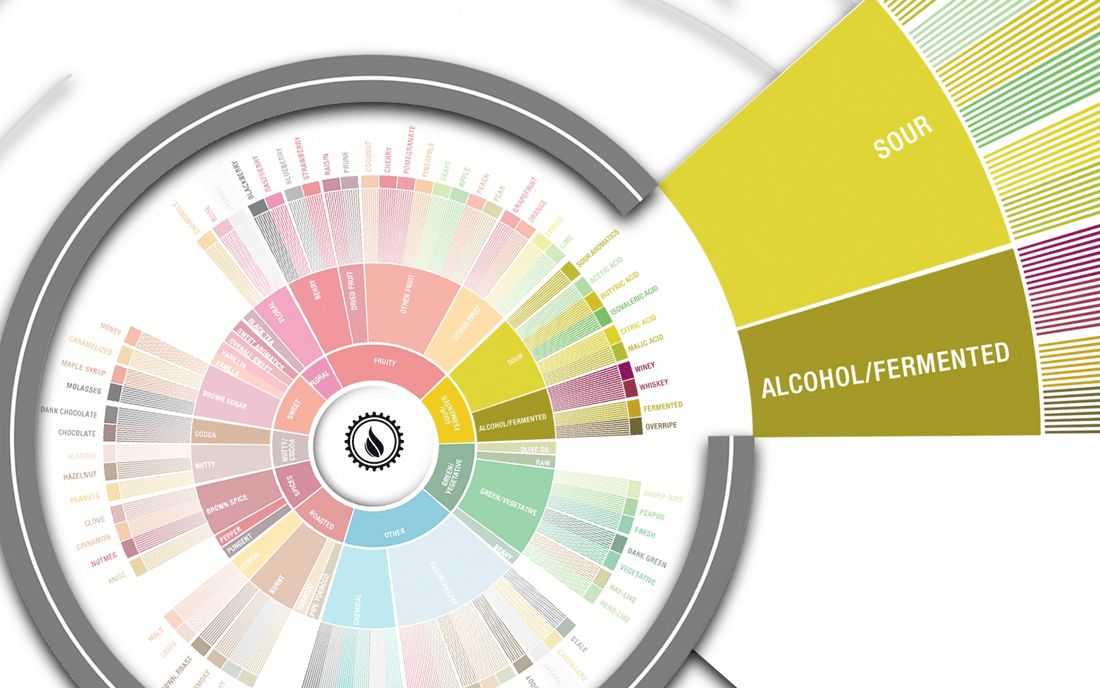
Deep Dive: Sour & Fermented Flavors in Coffee
Sourness and fermentation are the backbone of coffee’s brightness, structure, and complexity. On the coffee flavor wheel, the sour/fermented segment covers acetic acid, butyric acid, isovaleric acid, citric acid, and “alcohol/fermented” notes. While “sour” can sound negative, well-balanced acidity is what gives the best specialty coffee beans their lively, refreshing character—especially in single origin coffees.
Where Sour & Fermented Notes Come From
Coffee fermentation begins at the mill, as microbes break down the sticky mucilage on the beans. This microbial activity produces a range of organic acids—including acetic (vinegar), citric (lemon), and lactic (yogurt)—that contribute tang, zip, and fruitiness to the final cup. Natural and honey-processed coffees ferment longer in contact with the fruit, often developing more pronounced acidity and wine-like, sometimes wild, flavor. Washed coffees are typically cleaner and more focused. Light roasts preserve and spotlight these bright acids; darker roasts mellow them.
Identifying Acidity and Fermentation
To judge acidity, take a small, slurped sip: citric acid will taste like lemon or green apple; acetic acid like vinegar; lactic acid as a creamy tang. Fermented or “winey” flavors can show up as pleasant berry notes or, if pushed too far, as overripe faults. Not all sourness is desirable—notes of butyric acid (think parmesan or aged cheese) or isovaleric acid (old cheese, sweaty) often point to problems in processing or storage.
Tasting & Brewing Tips
When evaluating a coffee for bright acidity, smell the grounds and the brewed coffee for fruit, citrus, or wine aromas. During tasting, note where the acidity lands on your tongue (usually the sides and tip) and whether it’s lively, harsh, or creamy. Pour-over and immersion brewing methods (V60, Chemex, French press) each highlight different acids—experiment to discover your preference. To avoid unpleasant sourness, start with fresh roasted beans, use filtered water, and pay close attention to extraction time.
Why Acidity & Fermentation Matter
Acidity is the heart of coffee’s flavor and a marker of both origin and quality. Coffees from Ethiopia and Kenya are famed for their winey, vibrant acidity, while many Central and South Americans offer crisp apple or citrus notes. Understanding these flavors lets you confidently choose the best coffee subscription box or ethically sourced coffee for your home brewing setup. For a broader view of acidity’s place on the wheel, check out our guide Exploring the Coffee Taster’s Flavor Wheel.
And when you’re ready for lively, well-balanced acidity, browse Steel Oak Coffee’s current offerings—many of our fresh roasted coffee beans are sourced specifically for their clean, expressive brightness.
